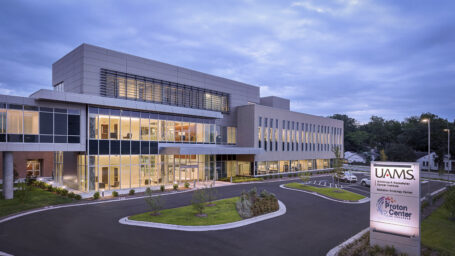The Proton Center of Arkansas Collaborators
UAMS is honored to collaborate with Arkansas’ other leading healthcare institutions and Proton International to bring this advanced treatment to cancer patients in our region.

Arkansas Children’s Hospital
Arkansas Children’s, Inc. is the only healthcare system in the state solely dedicated to caring for Arkansas’ 700,000 children.

Baptist Health
Baptist Health is Arkansas’ most comprehensive health care organization with more than 200 points of access.

Proton International
Proton International has an experienced team dedicated to bringing proton therapy to patients.

UAMS Health
With clinics covering nearly every medical need, we provide world-class treatment in a comforting, patient- and family-centered environment.
What is Proton Therapy?
Proton therapy is the most advanced form of radiation to treat cancer in the world today. Proton’s pin-point accuracy makes it an effective treatment for a wide range of solid tumors that are hard to reach with standard X-ray radiation.
Learn MoreAbout the Radiation Oncology Center
Learn more about the innovative and advanced radiation treatments.
Learn MoreProton Therapy Frequently Asked Questions
Proton therapy is the most advanced form of radiation treatment that delivers a pencil-thin beam of proton energy to the precise site of a cancerous tumor.
Learn MoreProton Center of Arkansas Physician Resources
Take a closer look all the benefits proton therapy can offer for your patients.
Learn more

